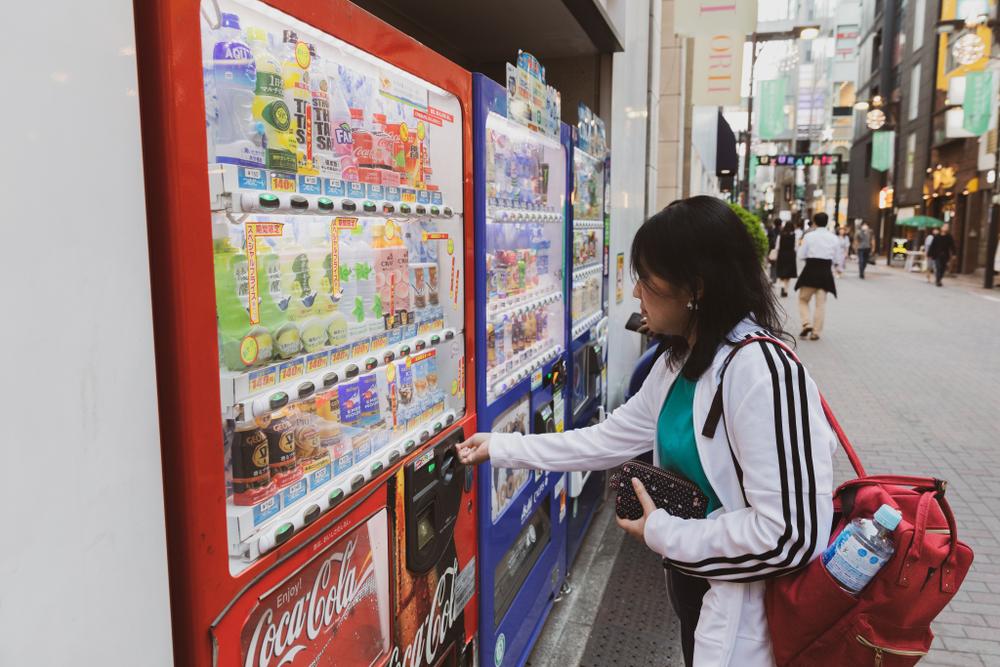Is U.S. retail ready for vending machine concept stores?
In an era where online shopping dominates, it's surprising to discover that nearly half of consumers still favor the tactile and immediate nature of in-store shopping over digital alternatives.
These shoppers are clear about their preferences: they’re looking for greater convenience, speed, and a touch of novelty in their retail experiences. In this context, the idea of Japanese-style vending machine concept stores is an intriguing one. Offering a blend of efficiency and unconventionality, these stores could very well redefine the traditional shopping experience in the United States.
Imagine a retail landscape in which consumers have 24/7 access to a diverse array of products, ranging from everyday essentials to gourmet delights, with the swipe of a card or tap of a smartphone. A setup like this promises not only a new level of customer convenience but also a shift in retail store designs, characterized by full automation and the seamless integration of digital technologies.
However, the journey toward widespread acceptance of vending machine concept stores in the U.S. is not without its challenges. Entrenched perceptions that vending machines can't provide fresh high-quality products, integration issues with traditional brick-and-mortar stores, and security concerns loom large. Yet for the business owner or entrepreneur who can overcome these challenges, a new approach to retail awaits.
U.S. vs. Japanese Perspectives
In the landscape of vending machines, Japan and the United States exhibit notable disparities in both prevalence and perception. In Japan, vending machines are an integral part of everyday life, with nearly 4 million distributed across the nation. That’s approximately one machine for every 31 people, highlighting Japan's convenience culture. Conversely, while the U.S. boasts a comparable number of vending machines, its significantly larger population results in a less dense distribution, with only approximately one vending machine for every 66 people across the
country.
Furthermore, the variety and acceptance of vending machines vary significantly between the two markets. In Japan, vending machines offer a wide variety of products, ranging from beverages and snacks to fresh fruit, hot meals and even seafood. The variety of offerings in the U.S. remains relatively limited, primarily featuring prepackaged snacks and beverages with extended expiration dates.
While some U.S. vending machine operators have started introducing machines with fresher products like milk and sandwiches, these options are sparse in the U.S. compared to Japan, where access to fresh food products is more commonplace.
Despite these differences, I believe there is a lot to be gained from making vending machines a more accepted part of American retail. Establishing an entire store, or even just a section within a larger establishment, operated entirely by vending machines could significantly minimize the need for extensive staffing, especially at a time when many retail outlets are struggling with labor shortages. Moreover, the streamlined operations and 24/7 accessibility can contribute to increased efficiency, allowing for round-the-clock service without the constraints of traditional
business hours.
Beyond economic advantages, vending machine concept stores also offer environmental
advantages through reduced reliance on packaging materials and optimized inventory
management. This results in significantly less waste, aligning with sustainability goals and
promoting eco-friendly practices.
Viability
By far, the biggest challenge to introducing vending machine concept stores to the U.S. is the widespread perception of vending machines as dispensers of stale or unhealthy goods. This assumption is not unfounded, given the historical reliance on vending machines in the U.S. for
stocking primarily prepackaged snacks and sugary beverages that lack freshness and nutritional
value. Overcoming this entrenched customer perception won’t be easy, but given the potential
benefits of making vending machines an accepted part of American retail, the endeavor is well
worth the investment.
To start off, some kind of entrepreneur or big-pocket corporation will need to foot the bill for sourcing and placing these more innovative vending machines in strategic locations across their
local area. The focus should be on providing machines that can dispense novel or healthy food
products that consumers aren’t used to seeing in a vending machine. For example, vending
machines featuring freshly prepared salads, customizable pizzas, or organic snacks sourced
from local farms would all serve as interesting and eye-catching choices.
Next, there would need to be a marketing campaign to generate interest and make vending machines a more accepted part of the retail shopping experience. This could include teaming up
with young influencers to highlight the diverse offerings available through vending machines and
securing advertising placements in popular TV shows and movies. As momentum grows, the
next big step would be to open a full-concept store where everything is provided through vending machines. A busy downtown area that gets a lot of foot traffic would be a great location.
Gaining traction with Gen Z consumers will be especially important, as they’re the market
segment that is likely to embrace new retail concepts with the most enthusiasm. To capture their attention, integrate cashless payment options and interactive digital interfaces into your
machines, catering to Gen Z's preference for seamless and tech-savvy shopping experiences.
As a bonus, having your machines exclusively accept cashless payments can significantly reduce the risk of theft or vandalism, providing added security and peace of mind.
Final thoughts
To summarize, while the journey toward widespread acceptance of vending machine concept stores in the U.S. faces many obstacles, the potential benefits are undeniable. The desire among consumers for greater convenience in their shopping experiences is clear. All it takes to make this vision a reality is someone prepared to challenge traditional norms in the retail industry and embrace the opportunities presented by emerging technologies and changing consumer preferences.
Dan Doromal is co-owner and VP of operations for Everest Ice and Water Systems, Apopka, Fla., whose Everest VX ice and water vending machine uses the most advanced proprietary components to replace the typical ineffective ice delivery service with an eco-friendly alternative.







